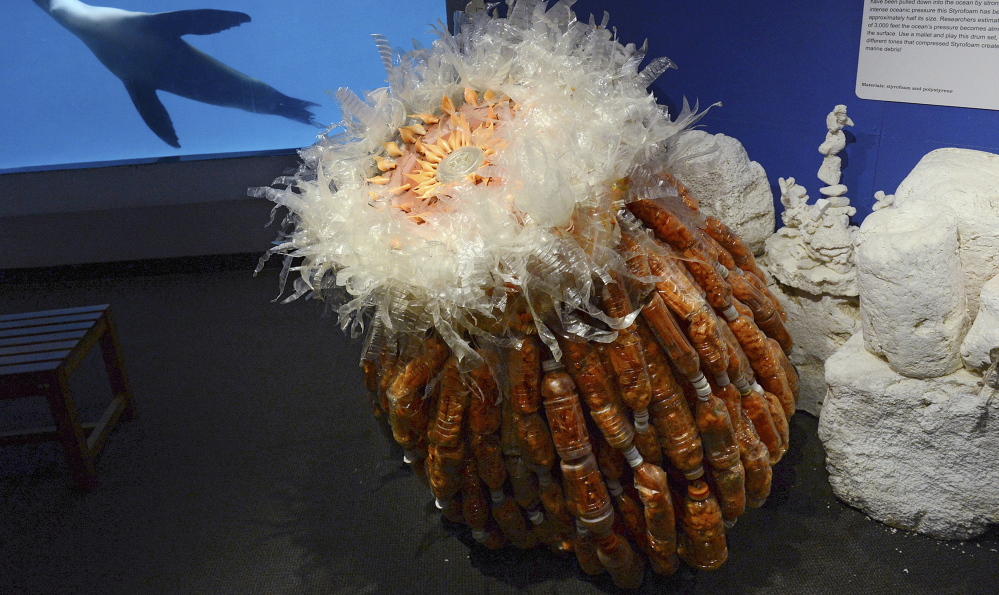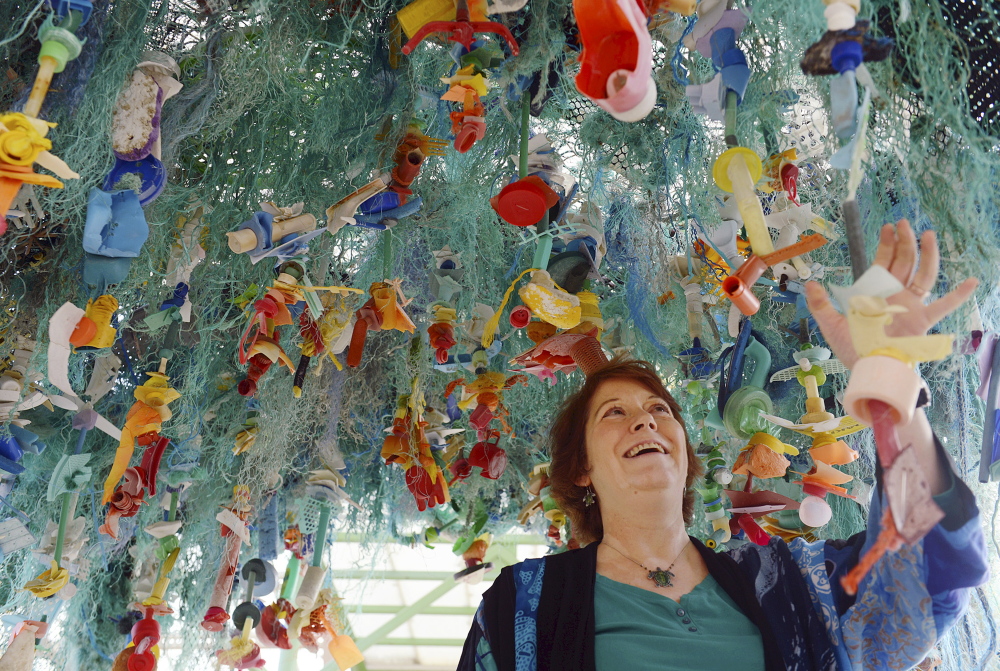MYSTIC, Conn. — After artist and teacher Angela Haseltine Pozzi’s husband of 25 years died, she moved from their home in Washington state to Bandon, Oregon, where she had spent summers as a child. That’s when she found the rugged, breathtaking beaches were littered with an endless amount of debris, especially small bits of plastic.
“I went to the ocean to heal and I found the ocean needed healing,” she said.
Her research showed that marine debris was a “huge problem” that endangers ocean life. She wondered how she could use her experience as an educator and artist “to help save the ocean” while involving the community. It was on New Year’s Day 2010, the day she uses each year to decide how she will make a difference over the next 12 months, that she decided to turn the debris into an art project as a way to raise awareness about the problem.
She and her team of volunteers have now collected 14 tons of debris, much of it plastic, from a 300-mile stretch of beach and have used almost all of it to construct 69 sculptures, many of which are on display around the country.
Twenty-one of the sculptures from the “Washed Ashore” collection have just gone on display at Mystic Aquarium and will remain there through June. While the sculptures have been exhibited at a dozen locations around the country, including three Sea World parks, this is the first time they have been shown in New England.
The sculptures include a giant sea anemone fashioned from plastic water bottles stuffed with foam that washed ashore. Among the other multicolored sculptures are those of 15 jellyfish, a sea lion, a coral reef, a sea turtle and a walk-though whale skeleton and an ocean gyre, a swirling vortex of debris.
The sculptures are fashioned from plastic bags and bottles, beach toys, lawn chairs, marine rope, flip flops, tennis balls, metal cans and lids, pipes, hoses, small bits of wood and tires, Styrofoam and shampoo and sunscreen bottles. There are even toothbrushes, cigarette lighters, an asthma inhaler and a pacifier.
The sea turtle is made from plastic in various shades of green, while a 5-foot-long fish is made from bits of plastic that have bite and pecking marks from fish and birds, which are harmed by ingesting the plastic. Most of the debris is not dumped in the ocean but ends up there after being washed down rivers, according to Pozzi. Her volunteers have found debris that originated from as far away as China.
“I wish we would run out of art supplies, but we never do,” she said.
Using the debris is a labor-intensive process as volunteers clean, scrub and disinfect the materials and then cut, drill and fasten them to the sculptures. There are educational panels that accompany the sculptures and an educational program will be developed with a grant from the National Oceanic and Atmospheric Administration.
Pozzi said she was excited to be at the aquarium for the opening of the exhibit, where her sculptures are located next to the animals that are harmed by the debris in the wild. The whale skeleton is just a few feet from the aquarium’s beluga whale exhibit.
As the executive director, art director and designer, among other positions, for Washed Ashore, a nonprofit organization with six employees, Pozzi said she works up to 14 hours a day, seven days a week.
“It’s driven by passion and the fact that I care deeply about this issue,” she said.
Pozzi said the exhibits are designed not just to educate people about the problem but to spur them to action. She suggested the next time people go to the beach, they walk along the high tide mark where light plastic often ends up.
“On the way back to your car … pick up some garbage along the way. That’s the best thing we can do,” she said.
Send questions/comments to the editors.




Success. Please wait for the page to reload. If the page does not reload within 5 seconds, please refresh the page.
Enter your email and password to access comments.
Hi, to comment on stories you must . This profile is in addition to your subscription and website login.
Already have a commenting profile? .
Invalid username/password.
Please check your email to confirm and complete your registration.
Only subscribers are eligible to post comments. Please subscribe or login first for digital access. Here’s why.
Use the form below to reset your password. When you've submitted your account email, we will send an email with a reset code.